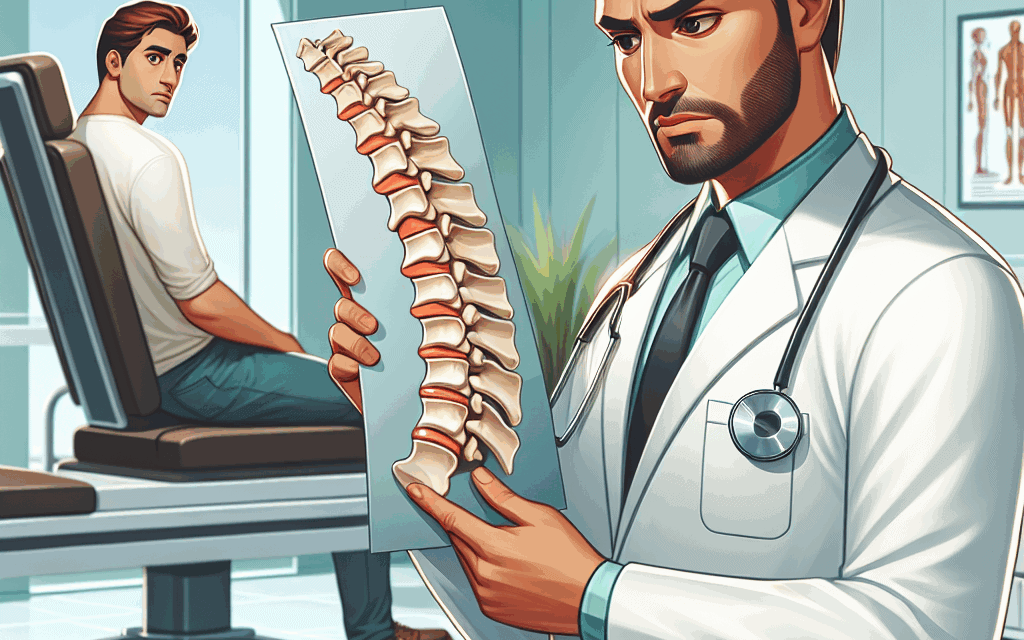Effective Diagnosis and Treatment of Herniated Discs by Tampa Specialists
Herniated discs are a common yet often misunderstood condition that can lead to significant pain and discomfort. In Tampa, specialists are equipped with the knowledge and tools necessary to diagnose and treat this condition effectively. This article will explore the intricacies of herniated discs, including their causes, symptoms, diagnostic methods, treatment options, and the role of Tampa specialists in managing this condition.
Understanding Herniated Discs
A herniated disc occurs when the soft inner gel of a spinal disc protrudes through a tear in the tougher exterior. This can lead to nerve compression, resulting in pain, numbness, or weakness in the affected area. Understanding the anatomy of the spine and the mechanics of herniation is crucial for both patients and healthcare providers.
The Anatomy of the Spine
The human spine consists of 33 vertebrae, divided into five regions: cervical, thoracic, lumbar, sacral, and coccygeal. Intervertebral discs sit between these vertebrae, acting as shock absorbers and allowing for flexibility. Each disc has two main components:
- Nucleus Pulposus: The soft, gel-like center that provides cushioning.
- Annulus Fibrosus: The tough outer layer that contains the nucleus and maintains the disc’s integrity.
When the annulus fibrosus weakens or tears, the nucleus pulposus can bulge out, leading to a herniated disc. This condition is most common in the lumbar region but can also occur in the cervical and thoracic areas.
Causes of Herniated Discs
Several factors contribute to the development of herniated discs, including:
- Aging: As we age, our discs lose hydration and elasticity, making them more susceptible to injury.
- Repetitive Strain: Jobs or activities that involve heavy lifting, twisting, or prolonged sitting can increase the risk.
- Genetics: A family history of disc problems can predispose individuals to herniation.
- Obesity: Excess weight places additional stress on the spine.
- Injury: Sudden trauma from accidents or falls can lead to disc herniation.
Recognizing Symptoms of Herniated Discs
Identifying the symptoms of a herniated disc is essential for timely diagnosis and treatment. Symptoms can vary widely depending on the location of the herniation and the nerves affected.
Common Symptoms
Patients with herniated discs may experience:
- Pain: This is often the most prominent symptom, which can be localized or radiate to other areas, such as the arms or legs.
- Numbness or Tingling: Affected nerves may cause sensations of numbness or tingling in the extremities.
- Weakness: Muscle weakness in the arms or legs can occur, impacting mobility and strength.
- Loss of Reflexes: Reflexes may be diminished in the affected areas.
Specific Symptoms Based on Location
The symptoms can also vary based on the location of the herniated disc:
- Cervical Herniation: Symptoms may include neck pain, headaches, and radiating pain down the arms.
- Lumbar Herniation: Symptoms often include lower back pain, sciatica, and pain that radiates down the legs.
- Thoracic Herniation: This is less common but can cause mid-back pain and abdominal symptoms.
Diagnostic Methods for Herniated Discs
Accurate diagnosis is crucial for effective treatment. Tampa specialists utilize a variety of diagnostic methods to confirm the presence of a herniated disc.
Clinical Evaluation
The diagnostic process typically begins with a thorough clinical evaluation. This includes:
- Medical History: The specialist will review the patient’s medical history, including any previous back issues, lifestyle factors, and symptom onset.
- Physical Examination: A physical exam will assess range of motion, reflexes, and muscle strength.
Imaging Techniques
If a herniated disc is suspected, imaging studies may be ordered:
- X-rays: While X-rays cannot show herniated discs, they can rule out other conditions such as fractures or tumors.
- Magnetic Resonance Imaging (MRI): This is the gold standard for diagnosing herniated discs, providing detailed images of soft tissues.
- Computed Tomography (CT) Scans: CT scans can also be used to visualize the spine and confirm a herniation.
Electromyography (EMG) and Nerve Conduction Studies
In some cases, specialists may recommend EMG or nerve conduction studies to assess nerve function and determine the extent of nerve damage. These tests can help differentiate between herniated discs and other conditions that may cause similar symptoms.
Treatment Options for Herniated Discs
Treatment for herniated discs can vary based on the severity of symptoms and the individual patient’s needs. Tampa specialists offer a range of treatment options, from conservative management to surgical interventions.
Conservative Treatments
Most patients with herniated discs respond well to conservative treatments, which may include:
- Physical Therapy: Tailored exercises can help strengthen the muscles supporting the spine and improve flexibility.
- Medications: Over-the-counter pain relievers, anti-inflammatory medications, and muscle relaxants can alleviate symptoms.
- Chiropractic Care: Chiropractic adjustments may help relieve pain and improve spinal alignment.
- Injections: Corticosteroid injections can reduce inflammation and provide temporary relief.
Surgical Options
If conservative treatments fail to provide relief after several weeks or if neurological symptoms worsen, surgical options may be considered:
- Discectomy: This procedure involves removing the portion of the disc that is pressing on the nerve.
- Laminectomy: In some cases, a laminectomy may be performed to relieve pressure on the spinal cord or nerves.
- Spinal Fusion: This may be necessary if there is instability in the spine after disc removal.
Innovative Treatments
Tampa specialists are also exploring innovative treatments for herniated discs, including:
- Regenerative Medicine: Techniques such as stem cell therapy and platelet-rich plasma (PRP) injections are being studied for their potential to promote healing.
- Minimally Invasive Surgery: Advances in technology have led to less invasive surgical options that reduce recovery time and minimize scarring.
The Role of Tampa Specialists in Managing Herniated Discs
Tampa is home to a variety of specialists who play a crucial role in the diagnosis and treatment of herniated discs. These professionals include orthopedic surgeons, neurosurgeons, physiatrists, and pain management specialists.
Orthopedic Surgeons
Orthopedic surgeons specialize in the musculoskeletal system and are often the first point of contact for patients with herniated discs. They perform surgical interventions when necessary and work closely with physical therapists to develop post-operative rehabilitation plans.
Neurosurgeons
Neurosurgeons focus on conditions affecting the nervous system, including the spine. They are skilled in performing complex surgeries for herniated discs and can address any associated neurological issues.
Physiatrists
Physiatrists, or rehabilitation physicians, specialize in non-surgical treatments for musculoskeletal conditions. They play a vital role in developing comprehensive treatment plans that may include physical therapy, medications, and lifestyle modifications.
Pain Management Specialists
Pain management specialists focus on alleviating chronic pain associated with herniated discs. They may employ various techniques, including medication management, injections, and alternative therapies, to help patients manage their symptoms effectively.
Collaborative Care Approach
The collaborative care approach in Tampa ensures that patients receive comprehensive treatment tailored to their specific needs. Specialists often work together to create a multidisciplinary plan that addresses all aspects of the patient’s condition, from diagnosis to rehabilitation.
Conclusion
Herniated discs can significantly impact an individual’s quality of life, but with the right diagnosis and treatment, many patients can find relief. Tampa specialists are well-equipped to provide effective care through a combination of conservative and surgical options. Understanding the anatomy, symptoms, diagnostic methods, and treatment options for herniated discs is essential for patients seeking help. By working with a team of dedicated specialists, individuals can navigate their journey toward recovery and regain their quality of life.
In summary, the effective diagnosis and treatment of herniated discs involve:
- A comprehensive understanding of spinal anatomy and the mechanics of herniation.
- Recognizing the diverse symptoms associated with herniated discs.
- Utilizing advanced diagnostic methods to confirm the condition.
- Implementing a range of treatment options tailored to individual needs.
- Collaborating with a multidisciplinary team of specialists to ensure comprehensive care.
By addressing these key areas, Tampa specialists can help patients manage their herniated discs effectively, leading to improved outcomes and enhanced quality of life.





